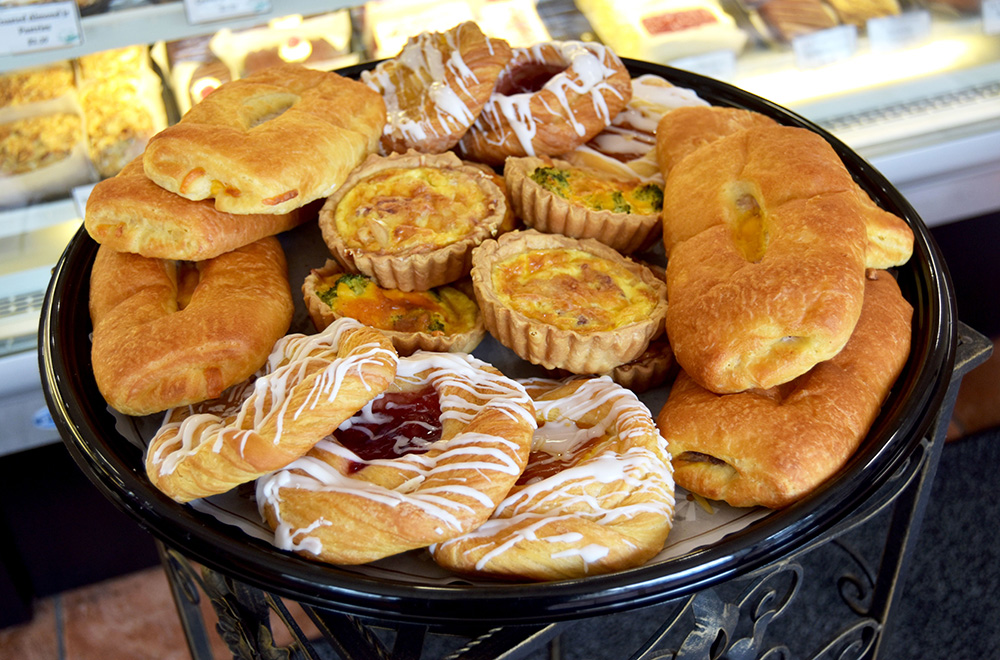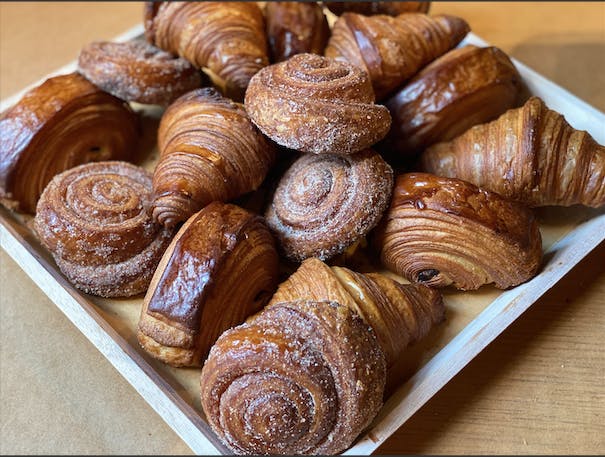Just how to Choose the most effective Catering Maddington for Your Requirements
Just how to Choose the most effective Catering Maddington for Your Requirements
Blog Article
Recognizing the Art of Pastry Shop Products: From Newly Baked Breads to Irresistible Pastries and Finger Foods
The complex art of bakery products encompasses a range of strategies and ingredients that transform fundamental parts into culinary delights. From the scientific research behind the excellent loaf of bread, where fermentation and gluten advancement play pivotal functions, to the skill required for developing split breads, each element exposes an engaging narrative of workmanship. The versatility of finger foods highlights exactly how flavor and texture can be artfully combined to engage diverse taste preferences. As we check out these components, one might wonder: what underlying principles regulate the success of these cherished creations?
The Science of Bread Making
At the heart of every loaf of bread exists a remarkable interplay of chemistry and biology. The procedure of bread making begins with the combination of flour, salt, water, and yeast-- each ingredient playing an important role in the last item. Flour has healthy proteins, mainly glutenin and gliadin, which, when combined with water, form gluten (Finger Food Catering Maddington). This elastic network is vital for trapping gases created throughout fermentation.
Yeast, a living microorganism, ferments the sugars present in the flour, generating carbon dioxide and alcohol in the procedure. The co2 gas creates bubbles in the dough, triggering it to increase and establish a light appearance. The temperature level and humidity throughout fermentation significantly influence yeast task and, subsequently, the bread's flavor and structure.

Learning Bread Strategies
Exactly how can one accomplish the fragile equilibrium of texture and taste that specifies remarkable pastry? Grasping bread methods calls for a deep understanding of components, approaches, and the scientific research behind them. Fundamental to this craft is the selection of top notch ingredients-- flour, butter, sugar, and eggs-- each playing an important duty in the end product's flavor and appearance.
The strategy of lamination, which includes folding layers of dough and butter, creates the desired flakiness in pastries like croissants and smoke pastry. Precision in temperature is important, as butter must stay cold to guarantee optimum layers. Similarly, appropriate mixing methods, such as the creaming technique for cakes, guarantee also incorporation of air and fat, resulting in a light and ventilated crumb.
Moreover, keeping the ideal humidity degrees throughout cooking can significantly influence the result, ensuring that breads climb properly and achieve that golden-brown finish. The art of bread additionally requires perseverance and method; each effort boosts one's ability and understanding of the intricate balance required to develop tempting pastries that thrill the senses. Mastery in these techniques ultimately distinguishes a knowledgeable pastry cook from an amateur.
Types of Finger Foods
The world of culinary thrills prolongs past pastries to incorporate a vast range of finger foods, which are commemorated for their comfort and versatility. These bite-sized treats are excellent for social celebrations, using a selection of flavors and structures that satisfy varied palates.

On the sweeter side, tiny tarts and bite-sized cupcakes offer a fascinating finish to any dish, interesting those with a wonderful tooth. Cheese and charcuterie boards offer as an innovative selection, enabling visitors to personalize their bites with an array of meats, cheeses, nuts, and fruits.
Taste Profiles in Baking
Cooking is an elaborate dance of flavor accounts that integrates wonderful, savory, and umami notes to create an unified experience for the taste buds. Recognizing these accounts is vital for bakers seeking to elevate their productions.
Ingredients such as delicious chocolate and caramel present intricate sweet notes that can either dominate or match other tastes. Ingredients like herbs, cheeses, and spices can transform an easy dough into a complex taste experience.
Umami, often ignored in baking, plays a considerable duty in enhancing tastes. Active ingredients such as aged cheeses, fermented items, or perhaps specific nuts add to a full-flavored depth that click to investigate boosts total taste.
Furthermore, the interaction of acidity from components like buttermilk or citrus passion can brighten tastes, using a rejuvenating counterpoint to sweet taste. By thoughtfully combining these flavor accounts, bakers can craft products that resonate with varied tastes, developing a memorable culinary experience. Ultimately, understanding flavor profiles is essential to innovation in the globe of cooking.
Crucial Cooking Tools and Ingredients
Recognizing flavor profiles in cooking collections the phase for choosing the right tools and ingredients that assist in the production of outstanding baked items. A reputable collection of cooking pans-- such as sheet pans, loaf pans, and cake pans-- is vital for accomplishing desired textures and shapes.
Flour offers as the foundation of the majority of recipes; picking the ideal kind-- be it bread, all-purpose, or bread flour-- can dramatically affect the result. Cooking powder and baking soft drink are crucial for creating lift in cakes and breads.
In addition, integrating taste boosters like vanilla essence, spices, and citrus passion can boost your productions. By making certain access to these essential devices and active ingredients, bakers can with confidence start their culinary trip, crafting a find diverse selection of delightful baked products.
Final Thought
Mastery in bread making, bread preparation, and finger food presentation reveals the complex partnerships between active ingredients and processes. Birthday Party Maddington. Checking out varied flavor profiles enhances the baking experience, while necessary devices and ingredients offer the foundation for success.
Exactly how can one achieve the delicate balance of texture and taste that defines extraordinary pastry? Essential to this craft is the choice of high-quality ingredients-- flour, butter, sugar, and eggs-- each playing a vital function in the last product's flavor and texture.

Comprehending flavor accounts in cooking collections the stage for choosing the right tools and components that facilitate the development of outstanding baked goods. Exploring varied flavor profiles enhances the baking experience, while essential tools and ingredients supply the foundation for success.
Report this page